
Club Officer Resources
Advice for All Club Officers
The seven nominated club officer positions are president, vice president education, vice president membership, vice president public relations, sergeant at arms, treasurer and secretary. The responsibilities for each role are specific, though they may over-lap or require cooperation between two or more officers. To make your term successful, consider these suggestions.
1. Attend club officer training.
This training is developed by Toastmasters International and conducted by your district leaders. Your district probably offers several sessions to choose from, allowing you to find one that fits your schedule. Most seasoned officers agree that attending training is invaluable to start your year.
2. Do some self-training.
Read the Club Leadership Handbook (provided by your club president). Explore www.toastmasters.org for additional resources. Peruse the Resource Library in the Resources section of the website where you’ll find lots of informative handbooks, fliers, templates, slideshows and more. Become familiar with Club Central on the site. Read the Toastmaster magazine. (Wait! You are!) Connect with other members via social media outlets. Visit different clubs to observe how other officers perform their duties. Search the internet for useful blogs or documents about your position.
3. Seek mentoring from former officers.
Ideally, meet with your immediate predecessor (like I did with Kristal), to make a smooth transition.
4. Just do it!
In Toastmasters you “learn by doing.” Don’t fear making a mistake. Most mistakes can be corrected. Take your role seriously enough to commit to it but lightly enough to allow yourself some slack if something goes wrong.
5. Resist doing another officer’s job.
While some roles overlap, clearly define where your responsibilities end and where another officer’s begins. Coordinate and delegate.
6. Attend club officer meetings.
Even if you think your role is quiet or not visible, the other officers should know the status of your efforts.
7. Enlist an assistant or team
When the workload increases or if you will be unavailable to perform your duties. The benefit? You train a successor in the process!

The Club President
As the person who sets the tone for the club, you are expected to provide helpful, supportive leadership for all of the club’s activities. You motivate, make peace, and facilitate as required. Though you must occasionally step in and make a difficult decision, rarely do so without consulting club members and other club officers. Strive to show respect for all members, even when you do not agree with them, and provide leadership for all. Stay current on all new developments via the Leader Letter and the announcements published on the Toastmasters website.
The Club Vice President Education
As vice president education, you schedule members’ speeches and projects and serve as a resource for questions about education awards, speech contests, and the mentor program. You are an important source of Toastmasters knowledge for club members, and it is your job to become familiar with all aspects of the Toastmasters education program.

The Club Vice President Membership
You promote the club and manage the process of bringing in guests and transforming them into members. By initiating contact with guests, making them feel welcome, and providing them with the information they need to join, you help maintain a constant influx of new people into your club. You also attentively monitor membership levels and strategize with the rest of the executive committee about how to overcome membership challenges when they occur.

The Club Vice President Public Relations
You promote the club to the local community and notify the media about the club’s existence and benefits it provides. You promote the club, update web content, and safeguard the Toastmasters brand identity. It’s your job to notify the media whenever your club does something newsworthy. As vice president public relations, you’ll find yourself writing news releases, creating and distributing fliers, and maintaining the club’s presence at various key places on the Web and in the community. Stay current on all new developments via The Leader Letter, Toastmaster magazine and the announcements published on the Toastmasters website and social media sites.

The Club Secretary
As the secretary, you maintain all club records, manage club files, handle club correspondence, and take the minutes at each club and executive committee meeting. You are also in charge of updating and distributing a roster of the current paid membership, and keeping the club officer list current at World Headquarters. Though some clubs combine the secretary role with the treasurer, it’s best to have a dedicated secretary who can help reduce the workload of the treasurer and occasionally assist the vice president education as well.

The Club Treasurer
You are the club’s accountant. You manage the club’s bank account, writing checks as approved by the executive committee and depositing dues and other club revenues. You are also in charge of submitting membership-renewal dues to World Headquarters (accompanied by the names of renewing members), filing necessary tax documents, and keeping timely, accurate, up-to-date financial records for the club. Though the treasurer’s duties are usually not the most demanding of all the club leadership positions, the consequences for members can be serious when they’re not completed accurately and on time. Stay current on all new developments via The Leader Letter and the announcements published on the Toastmasters website.
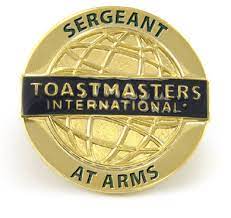
The Club Sergeant at Arms
You keep track of the club’s physical property, such as the banner, lectern, timing device, and other meeting materials. You arrive early to prepare the meeting place for members, and you stay late to stow all of the club’s equipment. You are also in charge of the meeting place itself, obtaining a new space when necessary, and maintaining contact with the people who allow you to use the space for your club meetings. The sergeant at arms also has a role to play during business meetings, speech contests, and other special club events. For example, the sergeant at arms escorts potential new members outside of the club’s meeting place while the members vote on admitting them to the club. The sergeant at arms stands at the door while contestants compete in speech contests to ensure that the speaker is not interrupted by latecomers. Stay current on all new developments via The Leader Letter and the announcements published on the Toastmasters website.

|
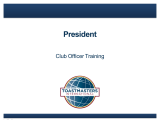
|

|

|

|

|

|

|

|
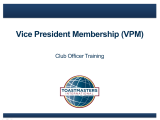
|

|

|
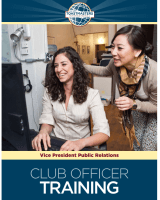
|
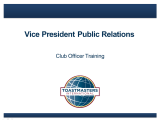
|

|

|

|
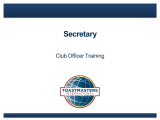
|

|

|

|
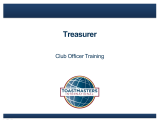
|

|

|
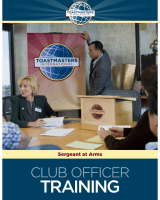
|
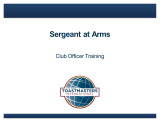
|

|

|
| Additional Club Officer Training Materials | Contest Rule Book (PDF) | 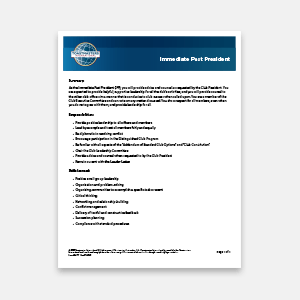
|
|

|
.png?h=300&w=300&la=en&hash=525F2CA41896F2BF6ED1B190F1F7DA811C4183C3)
|

|
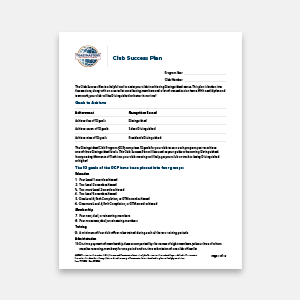
|
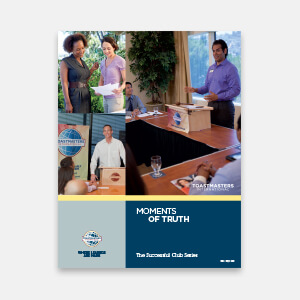
|

|

|

|

|
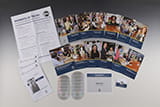
|
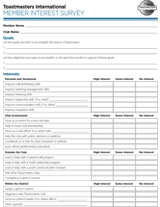
|

|

